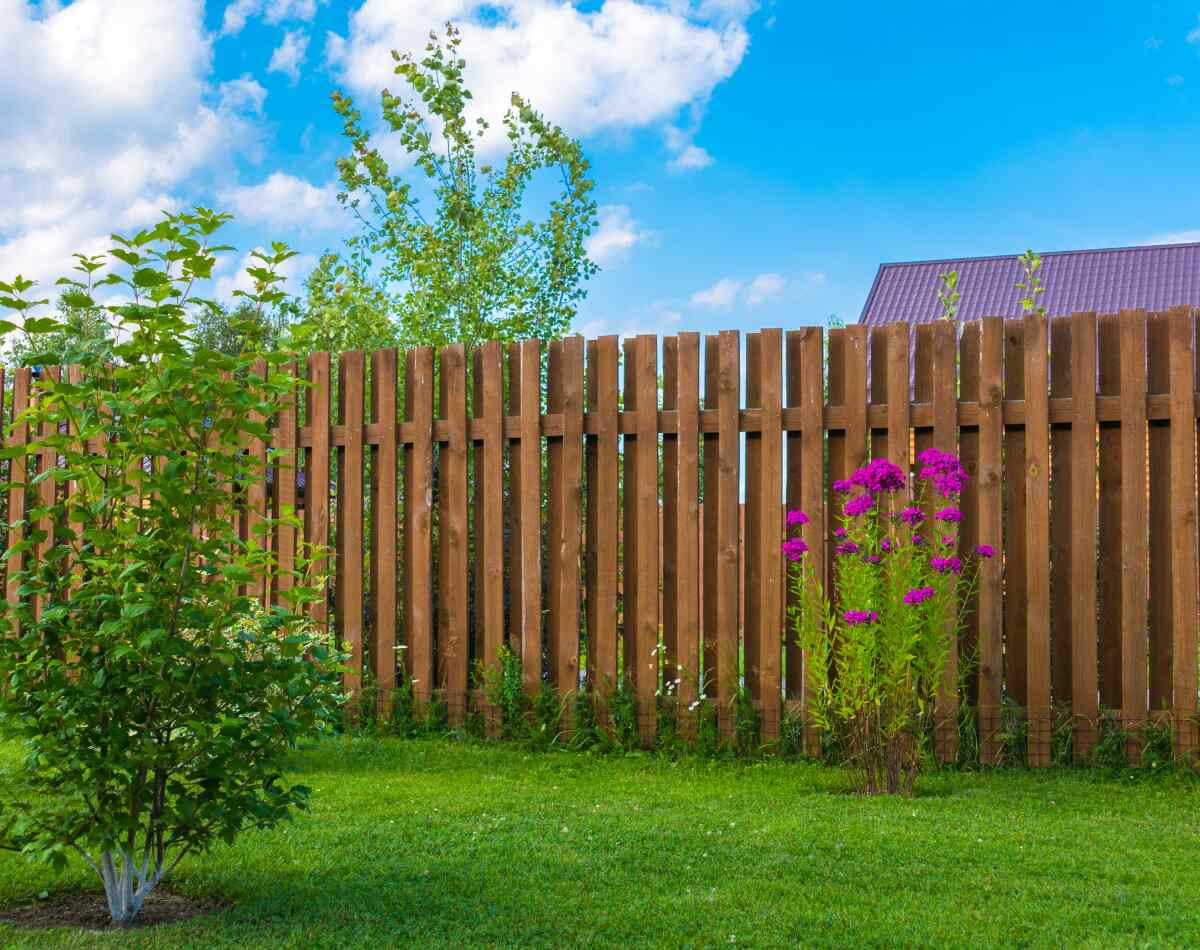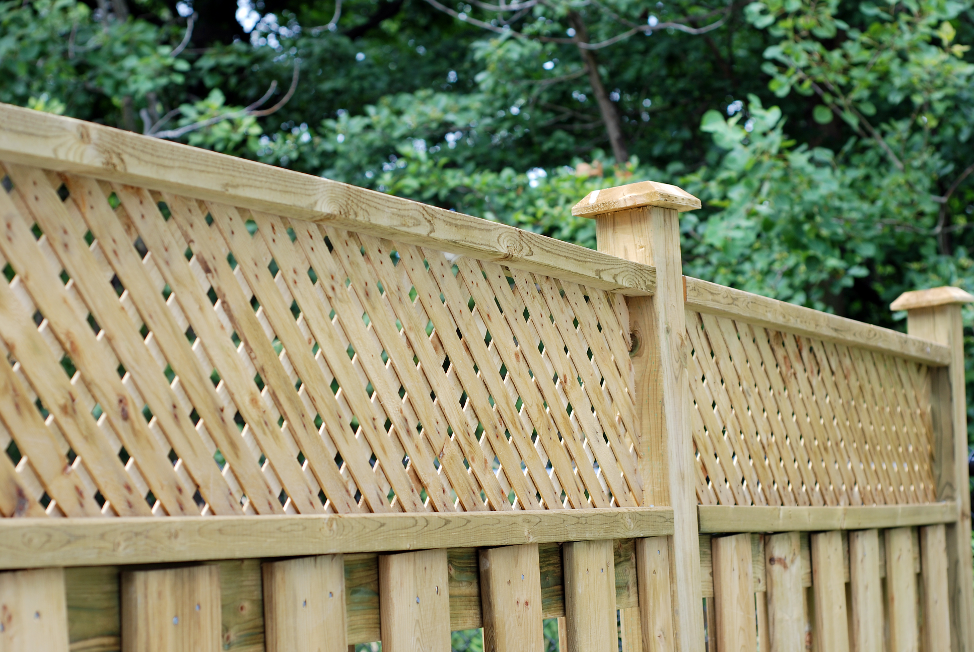All Categories
Featured
Picking the ideal fencing for your home includes careful consideration of performance, aesthetic appeals, spending plan, and long-term maintenance. Whether you're aiming to boost personal privacy, boost visual appeal, or protect your home, recognizing your options will aid you make an informed decision. Below's a comprehensive guide to choosing the suitable fencing for your requirements.
![]()
Personal Privacy: Tall, solid fences like wood or vinyl are excellent for obstructing exposure. Safety: Tough products like aluminum or steel offer a protected obstacle. Aesthetic Charm: Decorative fencings, such as functioned iron or picket styles, enhance curb charm. Control: For kids or family pets, fencings like chain-link or vinyl are functional selections. Sound Reduction: Dense materials, such as composite fencing, can aid moisten sound. Clearly determining your objectives will certainly narrow down your alternatives considerably.
Wood: Offers an all-natural, classic look and is very personalized but needs normal maintenance. Plastic: Low maintenance and sturdy yet might have a greater first cost. Light weight aluminum: Lightweight, rust-resistant, and sophisticated, though not perfect for personal privacy. Chain-Link: Functional and inexpensive yet does not have aesthetic appeal and privacy. Wrought Iron: Long lasting and decorative yet can be expensive and requires maintenance. Compound: A blend of wood and plastic, supplying durability with a wood-like appearance. Pick a material that aligns with your concerns and enhances your residential or commercial property's style.
![]()
Reduced Maintenance: Plastic, light weight aluminum, and composite fences need occasional cleaning. Moderate Upkeep: Wrought iron fencings might need repainting to avoid rust. High Maintenance: Wood fencings need routine staining, sealing, or paint. Think about just how much time and effort you're eager to buy maintenance throughout the years.
A picket fencing fits a typical home. A modern-day residential property may look best with streamlined, minimalist secure fencing materials like vinyl or steel. A country building may take advantage of rustic wood or split-rail secure fencing. 7. Seek Specialist Advice. Consulting a fence specialist can aid ensure you select the best product, style, and setup procedure for your residential property. Professionals can evaluate factors like soil environment, kind, and incline to recommend the most appropriate choices.
Final thought. Selecting the appropriate fencing for your residential property includes stabilizing functionality, appearances, and expense. Begin by recognizing your goals, exploring products, and considering upkeep and budget plan. With thoughtful preparation and expert advice, you can find the excellent fencing to enhance your building's worth, protection, and charm for several years to come.
- Specify Your Function. The very first step in picking a fence is determining why you require one. Usual objectives consist of:

Personal Privacy: Tall, solid fences like wood or vinyl are excellent for obstructing exposure. Safety: Tough products like aluminum or steel offer a protected obstacle. Aesthetic Charm: Decorative fencings, such as functioned iron or picket styles, enhance curb charm. Control: For kids or family pets, fencings like chain-link or vinyl are functional selections. Sound Reduction: Dense materials, such as composite fencing, can aid moisten sound. Clearly determining your objectives will certainly narrow down your alternatives considerably.
- Take Into Consideration Product Options. Each fence product has one-of-a-kind top qualities, advantages, and downsides. Below's a quick introduction:
Wood: Offers an all-natural, classic look and is very personalized but needs normal maintenance. Plastic: Low maintenance and sturdy yet might have a greater first cost. Light weight aluminum: Lightweight, rust-resistant, and sophisticated, though not perfect for personal privacy. Chain-Link: Functional and inexpensive yet does not have aesthetic appeal and privacy. Wrought Iron: Long lasting and decorative yet can be expensive and requires maintenance. Compound: A blend of wood and plastic, supplying durability with a wood-like appearance. Pick a material that aligns with your concerns and enhances your residential or commercial property's style.

- Element in Upkeep Requirements. Different fencing materials call for varying degrees of treatment:
Reduced Maintenance: Plastic, light weight aluminum, and composite fences need occasional cleaning. Moderate Upkeep: Wrought iron fencings might need repainting to avoid rust. High Maintenance: Wood fencings need routine staining, sealing, or paint. Think about just how much time and effort you're eager to buy maintenance throughout the years.
- Review Your Spending plan. Fencing prices include both materials and installment. While chain-link and timber are usually a lot more budget friendly in advance, products like vinyl and aluminum might save money in the future because of minimized maintenance demands. In addition, consider potential upgrades, such as entrances or decorative aspects, when establishing your spending plan.
- Examine Neighborhood Laws and HOA Policies. Prior to finalizing your choice, seek advice from local zoning regulations and home owner association (HOA) policies. Some areas have elevation limitations, material constraints, or layout standards that might influence your choice.
- Suit the Fencing to Your Residential or commercial property's Style. The design of your fencing ought to complement your home and landscape. :
A picket fencing fits a typical home. A modern-day residential property may look best with streamlined, minimalist secure fencing materials like vinyl or steel. A country building may take advantage of rustic wood or split-rail secure fencing. 7. Seek Specialist Advice. Consulting a fence specialist can aid ensure you select the best product, style, and setup procedure for your residential property. Professionals can evaluate factors like soil environment, kind, and incline to recommend the most appropriate choices.
Final thought. Selecting the appropriate fencing for your residential property includes stabilizing functionality, appearances, and expense. Begin by recognizing your goals, exploring products, and considering upkeep and budget plan. With thoughtful preparation and expert advice, you can find the excellent fencing to enhance your building's worth, protection, and charm for several years to come.
Latest Posts
Why Regular Vehicle Maintenance at Montclare Auto Repair Keeps Your Wallet Happy
Published May 29, 25
1 min read
Discover the Greatest Auto Repair Deals in Montclare, Chicago
Published May 26, 25
1 min read
Experience Yesterday's Pub: Where Taste Fulfills Custom
Published May 22, 25
1 min read